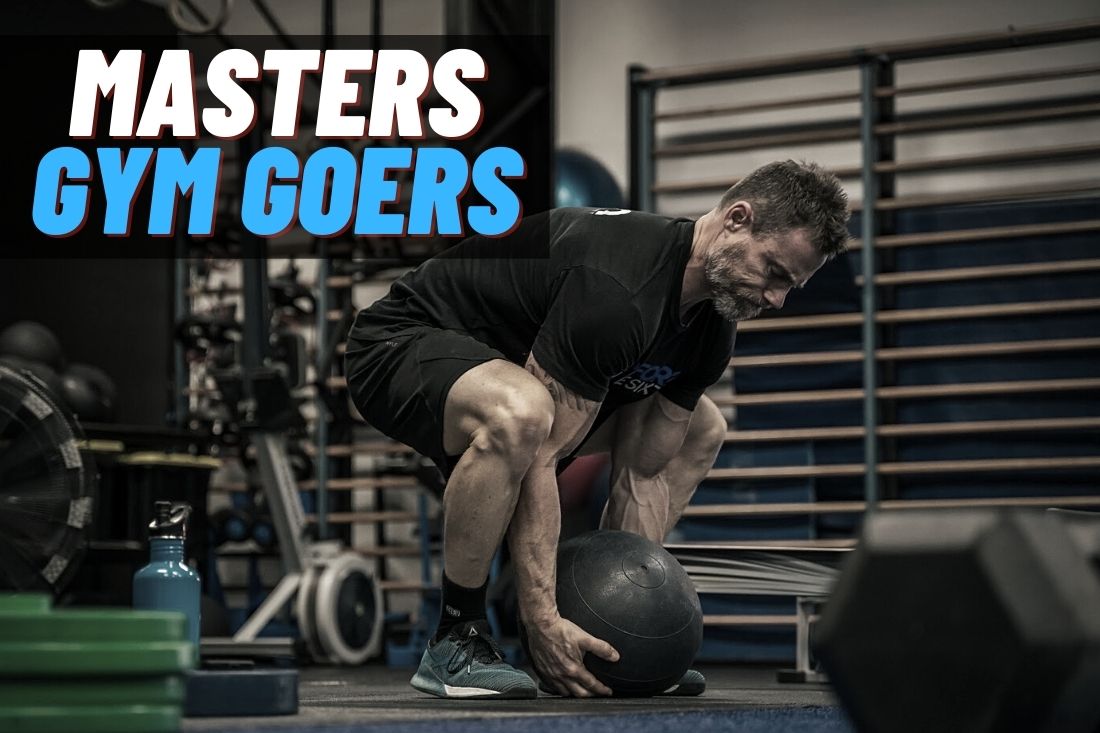THE INEVITABLE DECLINE
Sarcopenia is an inevitable age-related reduction in muscle mass and strength. After 30, you begin a steady 3-5% decline in muscle per decade, contributing to reduced strength and functionality and consequently increasing the risk of falls and fractures. Maximising strength has considerable application across efficiency of movement and ease of which activities of daily living are performed, fostering greater independence and quality of life well into older adulthood. As anabolic hormones start to decline with age the master gym goer (50+) will need to implement some key dietary strategies to support their gym sessions and counteract anabolic resistance to maximise lean tissue and functionality.
MITIGATING LEAN TISSUE LOSS
Hitting the gym at least 2-3 times per week to execute a progressive resistance training program is one of the most effective means of increasing muscular strength, size and functional mobility across every age. Masters gym goers will need to ensure resistance programs are not only personalised and adapted to age and ability but designed to progressively increase workloads to ensure appropriate stimulus is consistently being applied for maximal strength gains over time.
PROTEIN OF FIRST IMPORTANCE
Research has well established the importance of adequate high biological value (HBV) dietary protein found in animal foods (eggs, fish, meat, poultry, dairy: casein, whey) in order to preserve or gain muscle mass. The value in HBV protein is the high amount of amino acid leucine present, especially important as anabolic resistance in older adults reduces the impetus for muscle protein synthesis and thus calls for higher protein requirements compared to younger gym goers. Postmenopausal women in particular end up in greater catabolic states with the cessation of hormones oestrogen and progesterone without adequate quality protein or load-bearing exercise. Aiming for a dose of 0.4-0.5g/kg protein evenly spaced over 4-5 meals throughout the day is ideal. There is also benefit in consuming 35-40g of easily digested HBV protein (such as whey) within 30-45min post gym session to ensure the leucine threshold for muscle protein synthesis is efficiently achieved.
MICRONUTRIENTS IN FOCUS
Maximising intakes of omega 3 fatty acids, calcium and vitamin D should also be considered in wholefood choices. Choosing strained (Icelandic) fortified dairy, cold-water fatty fish (salmon, mackerel, tuna, sardines) as well as rotating nut consumption to include walnuts, chia and flaxseed simultaneously offers quality protein and micronutrients identified as important in attenuating muscle loss. The limitation in achieving this solely through food might find supplementation a convenient and effective way to complement strength increases.
EFFECTIVE SUPPLEMENTATION
Creatine supplementation can be considered appropriate if the goal is to increase total lean mass in combination with resistance training. Fish oil supplementation also shows significant therapeutic benefit in slowing muscle decline, and vitamin D and calcium supplementation would be particularly advantageous for postmenopausal women. Being a special population, masters gym goers are encouraged to seek qualified professional exercise and nutrition advice after thorough medical assessment across their physical condition before commencing any strength intervention.
Angelique Clark
Accredited Sports Dietitian, Exercise Physiologist and Fitness Industry Specialist. Founder and director of Nutrition to Soar www.angeliqueclark.com.au and owner of Perform 360 www.perfrorm-360.com.au.

